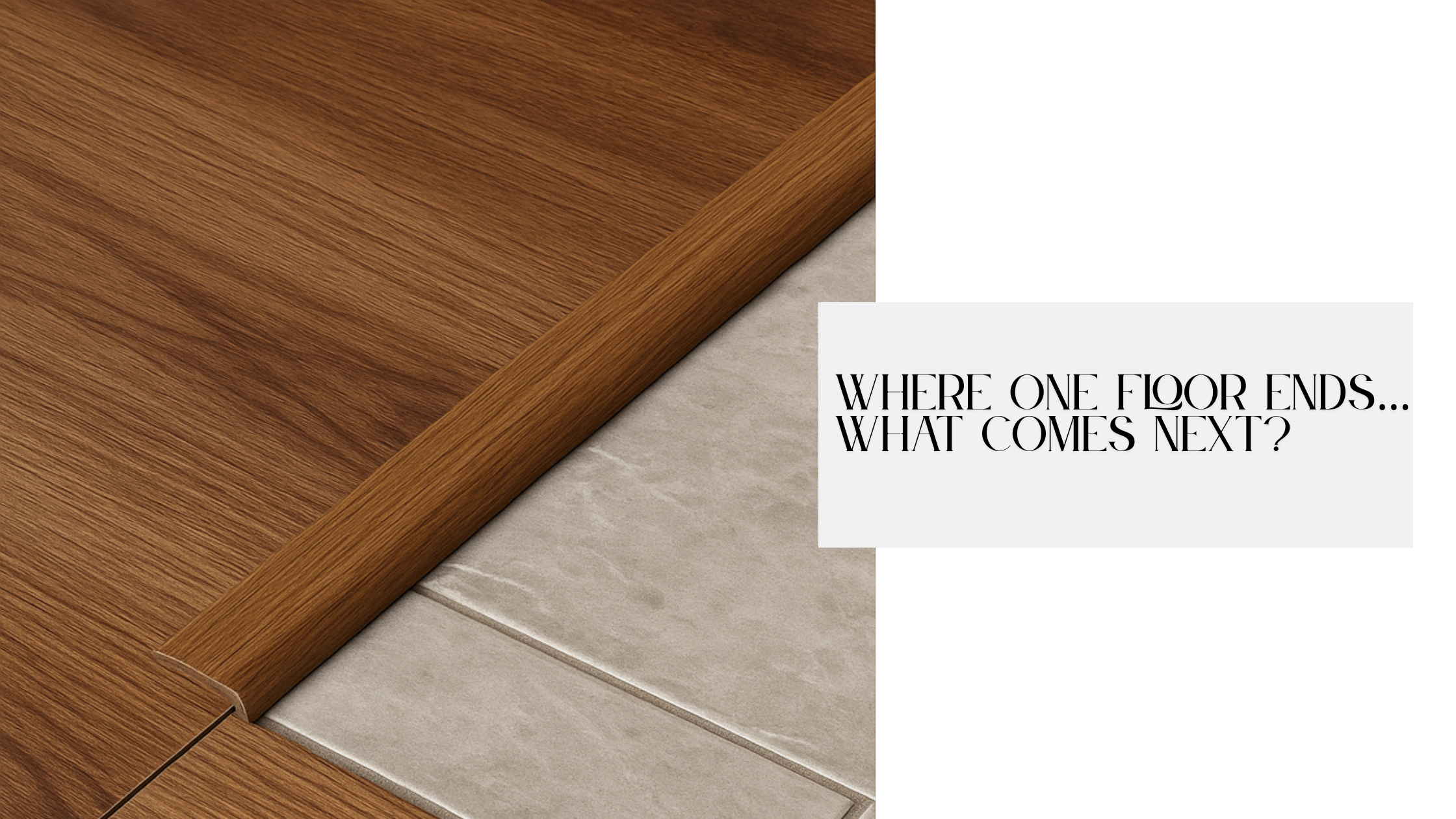Why This Question Matters Before You Install
If you're about to install new flooring, whether it’s hardwood, vinyl, laminate, or tile, there’s a good chance you’ve heard about transition strips. These narrow pieces of material connect two different types of flooring or flooring heights, but many people wonder: Are they really necessary?
Understanding when to use them (and when you can skip them) can save you from uneven finishes, damaged edges, or floors that simply don’t last.
If you're still planning your layout, it's worth reviewing which direction you should lay flooring or how to mix flooring types in open spaces for a cohesive look.
What Are Transition Strips?
Transition strips are finishing pieces designed to bridge gaps between two different types of floors, such as tile to vinyl or laminate to carpet. They're also used to:
- Connect rooms with different flooring materials
- Compensate for height differences
- Allow for floor expansion and contraction (especially in floating floors)
- They come in a variety of materials, including wood, metal, rubber, and vinyl.
When Transition Strips Are Necessary
1. Between Two Different Materials
If you’re connecting tile to vinyl, hardwood to carpet, or laminate to concrete, a transition strip is almost always required. These materials expand differently and need separation to prevent buckling or cracking.
2. Where Floors Meet at Doorways
Doorways are one of the most common areas for transition strips. They allow you to end one flooring type cleanly and start another without awkward gaps.
3. With Floating Floors
Floating floors like laminate or click-lock vinyl planks require expansion gaps. Transition strips allow the floor to move without pressure against other surfaces.
When You Might Skip Them
Same Material, Same Height
If your vinyl floor continues from one room into another with no height difference, you might not need a strip, especially with click-lock systems.
Open Floor Plans With Seamless Layouts
For open spaces using the same flooring type (like continuous vinyl plank flooring across living and dining areas), a transition strip might interrupt the clean look. Still, you’ll need to make sure expansion gaps are handled correctly along the edges.
Note: Even in these cases, some installers recommend T-moldings to maintain the product warranty.
Types of Transition Strips and Where They’re Used
T-Molding
- Used between floors of the same height (e.g., vinyl to vinyl or tile to tile)
- Common in open plan layouts or between two rooms with the same flooring
Reducer
- Bridges flooring surfaces where one is slightly lower (e.g., vinyl to concrete)
- Helps avoid tripping hazards
Threshold (End Cap)
- Used where flooring ends at a vertical surface, such as a sliding door track
- Also used at fireplaces or exterior doors
Carpet Transition Strip
- Specifically designed for joining carpet to hard surfaces like tile or vinyl
Pros of Using Transition Strips
- Prevent wear and tear on flooring edges
- Compensate for height differences
- Allow floors to expand and contract naturally
- Cleaner visual breaks between different rooms or materials
- In some cases, maintain the product warranty
Cons of Using Transition Strips
- May disrupt a seamless flooring look
- Can be a tripping hazard if poorly installed
- Adds extra cost and installation time
Final Considerations Before You Decide
Match the Strip to the Flooring Type
Make sure the transition piece matches both the material and height of your floors. Many vinyl flooring manufacturers sell matching T-moldings, reducers, and end caps for their plank lines.
Think About Moisture Zones
In areas like bathrooms or kitchens, transition strips also help keep water from seeping into floor gaps, especially between tile and vinyl.
Ask If It Affects the Warranty
Some flooring brands require expansion breaks with T-strips every 30 feet. Skipping them can void your product warranty.
Conclusion
You don’t always need transition strips, but when you do, skipping them can lead to floor damage, buckling, or lost warranties. If your layout includes vinyl, tile, or a combination of materials, use them where necessary. For same-level, same-material open plans, you may skip them, but only if expansion is accounted for properly.
Always follow the flooring manufacturer's installation guidelines. The right call depends on your layout, materials, and long-term goals.
FAQs
Q. Do I need transition strips under every doorway?
A. Not always. If you’re using the same floating flooring (vinyl, laminate, engineered hardwood) across rooms with no height differences, you can often skip them, unless the manufacturer or span length requires one for warranty reasons
Q. When should I always use transition strips?
A. Use them when:
-
Two different materials or thicknesses meet (like tile & vinyl, carpet & wood)
-
There’s a height difference between rooms
-
You need to allow for flooring expansion and contraction
-
For safety and finish at doorways and entryways
Q. Can I skip transitions between rooms with the same flooring?
A. Yes—if flooring is nailed or glued, subfloors are even, and areas are within expansion tolerances. For floating floors, transitions are often best practice, even across identical floor types.


